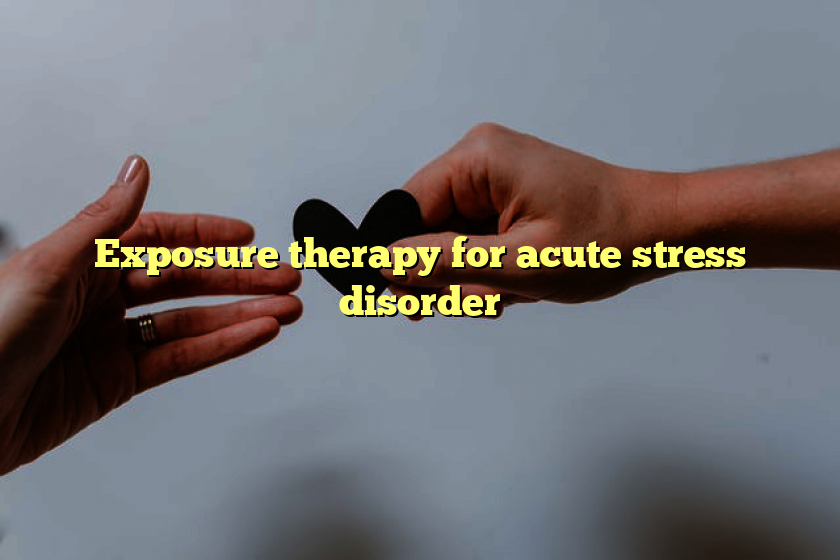Each May is Mental Health Month, a time to raise awareness and take action to improve individuals and societies’ mental health and wellbeing.
In 2020, the American Physical Therapy Association House of Delegates passed position #P06-20-40-10: “It is within the professional scope of physical therapist practice to screen for and address behavioral and mental health conditions in patients, clients, and populations.”
Physical, behavioral, and mental health are inseparably interconnected. As such, physical therapists can play an active role in preventing, managing, and promoting mental health. This includes a range of actions that increase the chances of more people experiencing better mental health. Such programs, introduced across clinics, schools, workplaces, and communities, usually target stress which can result in mental and physical disorders if left unaddressed.
Preventing mental illness and promoting good mental health involves the creation of services that support mental health and allow people to adopt and maintain healthy lifestyles.
Physical therapists have many interventions which support mental health and wellbeing. From exercise, physical activity and nutrition to stress management and psychologically informed care we can improve mood and boost our patients ability to cope with distress related to depression and anxiety.

Mindfulness-and-Acceptance-Based interventions
Mindfulness-and-Acceptance-Based interventions (ACT & mindfulness) constitute a family of treatments proven to promote mental wellbeing. These methods address conditions commonly treated by physical therapists including pain, stress, hypertension, cardiovascular disease, sports performance enhancement, immune function, tissue healing, geriatric, pelvic, and pediatric health.
Mindfulness-and-acceptance-based interventions (ACT & mindfulness) can be used to support the creation of behavioral and mental health services in PT practice.
A 2020 randomized controlled trial in the European Journal of Psychiatry found mindfulness to be just as effective as traditional CBT. Mindfulness also has the potential to be more acceptable and enjoyable to patients, less stigmatizing, and are cost-effective. Mindfulness and acceptance-based interventions in physical rehabilitation are primarily used to help clients with chronic pain adapt to illness and disability, which promotes functional recovery.
Physical therapists can support and promote services which optimize behavioral and mental health and enhance the well-being of society.
Mental Illness is on the Rise in the United States of America
The burden of mental illness in the United States is among the highest of all diseases, and mental disorders are among the most common causes of disability. Mental illness increases the risk for many types of physical health problems. Similarly, the presence of chronic conditions can increase the risk for mental illness.
Many view the treatment of chronic pain as “complex” because it is affected by many factors in addition to pain intensity, such as your emotional state (“I am angry that I am feeling this way”), beliefs about pain (“This pain means there’s something seriously wrong with me”), expectations (“These painkillers aren’t going to work”), and environment (“I don’t have anyone to talk to about how I feel”).

In fact, pain is generally recognized to be associated with three major components:
1. Physical sensations
2. Emotional responses to the sensations
3. Social effects of the experience
Psychosocial factors of the pain experience, such as pain catastrophizing, are well known yet few professionals have the tools to intentionally target this construct in practice. Mindfulness and acceptance are positive psychological factors which impact pain catastrophizing in a meaningful way. Together they alleviate distress, and promote both physical and mental wellbeing.
However, there continues to be a gap between the hype and the research.
Chronic pain conditions have a bidirectional association with mental wellbeing.
One significant challenge is the research supporting psychologically informed
Physical therapy has mostly left out mindfulness and acceptance-based interventions even though the evidence is strong and more abundant than popular interventions such as pain education:
• A 2011 review found mindfulness as effective as cognitive behavioral therapy in reducing depression and anxiety for patients coping with chronic pain (Veehof, et al).
• A 2012 review of people with lower-back pain found limited evidence that mindfulness can improve pain acceptance (Cramer, et al).
• A 2016 meta-analysis reported significant improvements in pain & disability (Veehof, et al).
• A 2019 meta-analysis found moderate effects in favor of mindfulness- and acceptance-based interventions compared to controls in pain. (Haugmark et al).
Mindfulness and acceptance-based interventions also reduce pain intensity!
![]() FREE Download: The 5 Pillars of Pain Care
FREE Download: The 5 Pillars of Pain Care
Dr. Tatta’s simple and effective pain assessment tools. Quickly and easily assess pain so you can develop actionable solutions in less time.Download
The Interconnectedness of Physical and Mental Health and Wellbeing
As licensed healthcare professionals, physical therapists are well aware of the bidirectional relationship between mental and physical health. You readily identify this association and its influence on biological, psychological, and social outcomes.
In addition, there is a never-ending flow of evidence-based literature and media stories pointing to lifestyle factors, environment, social determinants of health, and health equity.
It can seem like a daunting task to consider all of these factors and overwhelming to create a treatment plan that is actionable and achievable. There never seems to be enough time to effectively educate and treat the patient.
To prevent overwhelm and deliver effective care professionals are adopting new microlearning interventions to treat people with complex health conditions.
Microlearning is the acquisition of knowledge or skills in the form of small units. The advantage of these short, buildable interventions is that they demand a low time commitment from both providers and patients yet deliver concentrated snippets of actionable information.
Because microlearning places emphasis on repetition, practice, and reinforcement over time, it can increase knowledge retention, proficiency, and long-term health behavior change.
On this week’s episode of the Healing Pain Podcast, I shared a live patient demonstration of a microlearning intervention called dropping an anchor. This short, simple, yet powerful technique can be used to target and ease pain catastrophizing.
Dropping an anchor helps people momentarily cope with fear, pain-related anxiety, rumination, difficult emotions, or any challenge that shows up in the therapy room. It is also a wonderful way to begin a therapy session with a sense of calm and groundedness.
Check out the live demonstration here!

The typical medical intervention in a clinical trial is often 90-minutes long! That is a lot of time and not realistic for most healthcare professionals in a busy practice setting. In contrast, we are learning that micro-interventions of 5-10-minutes may be the best way to cultivate continuous health behavior change.
A 2021 randomized controlled trial in the European Journal of Pain found that internet-delivered acceptance and commitment therapy using microlearning interventions produced a broad range of outcomes for chronic pain, with positive results on pain interference, mood as well as pain intensity for longtime chronic pain sufferers. Outcomes were sustained at a 1-year follow-up
Microlearning techniques and interventions are a key part of the mindfulness-and-acceptance-based methods professionals learn through the Institutes courses.
Embedded inside the ACT for Chronic Pain and Mindfulness-Based Pain Relief course are dozens of specific microlearning exercises which easily fit into a busy practice setting.
You don’t have to do it all.
In fact, small, concentrated, and consistent snippets may be the best way to move people toward health instead of being engulfed by a sea of information.
Start small and try dropping an anchor today with one patient. My guess is you and your patient will be pleasantly surprised with the outcome and see an immediate improvement in mood and mental wellbeing.
Learn more about interventions which support behavioral and mental wellbeing here!
Mental health is defined as a state of well-being in which every individual realises his or her own potential, can cope with the normal stress of life, can work productively and fruitfully, and is able to make a contributions to his or her community.[1] More concrete mental health includes different components of life; for example, in terms of relationships, having a good relationship with family and having supportive friends, with the ability to talk about feelings. For leisure time, it is about having hobbies, doing exercises on regular basis and having regular holidays. Furthermore, it is important to follow a healthy lifestyle that includes, having healthy eating habits, not smoking or drinking and not taking non‐prescribed drugs and at least being able to achieve some goals in life. Mental health is not merely the absence of a mental disorder. It exists on a continuum to include flourishing mental health, very good mental health, mean mental health, decreased mental health, mental health problems and mental health disorders.[2] Exercise is an evidence-based treatment for people with mental health issues, and physical therapists work with people who may have mental health issues alongside other long-term health issues.[3]
Mental disorders comprise a broad range of problems. They are generally characterized by a combination of abnormal thoughts, emotions, behaviour and relationships with others. Some examples: schizophrenia, depression, intellectual disabilities and disorders due to drug abuse. People with mental illness eg depression, schizophrenia and bipolar disorder, often have poor physical health and experience significant psychiatric, social and cognitive disability.
Persons with mental disorders have a decreased life expectancy of approximately 10–15 years in comparison with the general population. Therefore, early interventions at the onset of mental disorders can greatly improve outcomes[4]. About half of the mental disorders begin before the age of 14. Similar types of disorders are being reported across cultures. Mental disorders are associated with high economic burden.[5] Moreover, neuropsychiatric disorders are among the leading causes of worldwide disability in young people. About 23% of all years lost because of disability are caused by mental and substance use disorders. War and disasters have a large impact on mental health and psychosocial well-being. Rates of mental disorder tend to double after emergencies. Mental disorders increase the risk of getting ill from other diseases such as HIV, cardiovascular disease, diabetes, and vice-versa.[6]
- 1 in 4 people will experience a mental health issue of some sort during their lifetime[3]
- 1 in 6 people are likely to have had mental health issues in the past seven days[3]
- people with mental health issues are more at risk of having poor physical health[3]
- 70% of premature deaths in people with mental health issues are due to poor physical health[3]
- mental health issues are one of the main causes of the overall disease burden worldwide.[3]
Barriers to Mental Health Services
[
edit
|
edit source
]
Misunderstanding and stigma surrounding mental ill-health are widespread. Despite the existence of effective treatment for mental disorders, there is a belief that they are untreatable or that people with mental disorders are difficult, not intelligent, or incapable of making decisions. This stigma can lead to abuse, rejection and isolation and exclude people from health care or support. Within the health system, people are too often treated in institutions which resemble human warehouses rather than places of healing.[6]
Human rights violations of people with mental and psychosocial disability are routinely reported in most countries. These include physical restraint, seclusion and denial of basic needs and privacy, as well as coercion.[7] Few countries have a legal framework that adequately protects the rights of people with mental disorders. Globally, there is huge inequity in the distribution of skilled human resources for mental health. Shortages of psychiatrists, psychiatric nurses, psychologists and social workers are among the main barriers to providing treatment and care in low- and middle-income countries.[6]
In order to increase the availability of mental health services, there are 5 key barriers that need to be overcome[6]:
- the absence of mental health from the public health agenda and the implications for funding
- the current organization of mental health services
- lack of integration within primary care
- inadequate human resources for mental health
- lack of public mental health leadership
Governments, donors and groups representing mental health service users and their families need to work together to increase mental health services, especially in low- and middle-income countries.[6]
The Relation of Physical Activity and Exercise to Mental Health
[
edit
|
edit source
]
Mental disorders are of major public health significance. It has been claimed that vigorous physical activity has positive effects on mental health in both clinical and non-clinical populations.[8][9][10] Mental health problems are the leading predictor of years lived with disability worldwide. Furthermore, without intensified prevention and management, the burden is estimated to increase to a greater extent. The consequences of mental health problems are devastating for the person and society as a whole and are compounded by physical health comorbidities with which most people with mental health problems are confronted. Physical health comorbidities are a major cause of the reduced life expectancy of 15–20 years in this population. The relationship between mental health and physical activity is supported by a growing number of articles. There is rigorous evidence now that physiotherapy improves mental and physical health in this vulnerable population.
Follow the link for more information about Physical Activity and Mental Health
Unfortunately, these efforts are becoming integrated into clinical practice at a slow pace. Physical activity is not always considered to be a worthwhile strategy. The benefits of physical activity are twofold, as people with mental health problems are also at an increased risk of a range of physical health problems, including cardiovascular diseases, endocrine disorders and obesity. Physical activity influences cognition and cardiorespiratory fitness and reduces dropout due to a wide range of mental health problems. The relationship between physical activity and mental health has been widely investigated.
The health benefits of regular exercise are:
- Improved cardiovascular fitness
- Improved sleep
- Better endurance
- A positive influence on metabolic syndrome and diabetes
- Stress relief
- Improved mood
- Increased energy and reduced tiredness.
- Exercise reduces anxiety, depression, negative mood and social isolation and improves self‐esteem, cognitive functions and quality of life.[2]
A 2021 study found that both aerobic and resistance exercise training have promising resulting in the treatment and management of mental health conditions, particularly depression and anxiety[11]. Recent research has shown that daily exertion ranging from low to high intensity exercise, physical activity, and or regular participation in recreational games can be used as part of the treatment of acute and chronic stress, depression and anxiety in the general population. This study found that aerobic exercises and walking programmes are the most effective and most commonly used interventions for the treatment of psychological disorder[12].
The Role of Physiotherapy in Improving Mental Health
[
edit
|
edit source
]
Not all physiotherapists realise that mental health is all the business of physiotherapy. However, it is well illustrated in this quotation: ‘no health without mental health’.[2]
Physiotherapists are seen as experts in aspects of physical health care and can offer:
- Non-pharmacological management of pain
- Expertise in prescribing individualised exercise programs, which can improve mood, promote wellbeing and address co-morbidities associated with mental health diagnoses.
- Interventions to address physical issues of people with mental health diagnoses which hinder social participation and recovery, eg. minimising or counteracting the side-effects some of psychotropic medications
- Expertise in motivating, where appropriate, patients and promoting self-management in the context of mental and physical health issues.
- Management of falls and mobility issues for older people and developmental issues for children and young people.
- Expert advice and intervention to address impaired body awareness and reduce dissociation (disconnection from ‘thoughts, feelings, memories or sense of identity) associated with poor mental health.
- Development and delivery of individually-tailored lifestyle and weight management advice and programs.[13]
Good mental health is fundamental to the well-being of individuals, families and communities. Poor mental health is identified as one of the biggest causes of disability, poor quality of life and reduced productivity. There is also a strong association between mental health conditions and people reporting chronic pain.[14] It has been documented that physical activity can improve quality of life for people with serious mental illness. Improved physical health can alleviate psychiatric and social disability. A notable number of longitudinal and cross-sectional studies have proven the usefulness of physical activity as a preventative strategy and as adjunct treatment for mental illness. Several physiotherapy interventions are potentially effective in improving physical and mental health and health- related quality of life. The most commonly used forms of exercise are aerobic- and strength exercises. Aerobic exercises, such as walking, jogging, cycling, swimming, have been proven to reduce anxiety and depression
The burden of depression, anxiety and other mental disorders call for concerted, inter-sectoral response. Not only to raise public awareness but also to provide treatment and prevention strategies that can reduce this large and growing health problem, including the economic losses attributable to them. The correlations between poor mental health and an increased prevalence of musculoskeletal conditions, multiple areas of pain, chronic and preventable diseases, emphasizes the need for an effective and holistic multidisciplinary approach to the management of these conditions.[15]
Physiotherapists have also a key role in the treatment of patients with schizophrenia and their interventions may have a broad spectrum of benefits for patients. In particular, physiotherapists are physical health experts providing an important bridge between physical and mental health in patients with schizophrenia. Promoting and encouraging physical activity is central to the physiotherapist’s role in treating individuals with schizophrenia.[16]
Definition of Physiotherapy in Mental Health
[
edit
|
edit source
]
Physiotherapists who were working in mental health and psychiatry applied in 2011 for recognition as a subgroup within the World Confederation of Physical Therapy. The main goal of this subgroup is to bring the different physiotherapy interventions in mental health and psychiatry together to clarify the role of physiotherapy in this field.
For that reason, the International Organization of Physical Therapy in Mental Health (IOPTMH) developed a definition that generally describes the field of physiotherapy in mental health that is recognizable among most colleagues across the world. Physiotherapy in mental health is a specialty within physiotherapy. It is implemented in different health and mental health settings: psychiatry and psychosomatic medicine. It is person-centred and provided for children, adolescents, adults and older people with common (mild, moderate) and severe, acute and chronic mental health problems, in primary and community care, inpatients and outpatients. Physiotherapists in mental health provide health promotion, preventive health care, treatment and rehabilitation for individuals, groups and in‐group therapeutic settings. They create a therapeutic relationship to provide assessment and services specifically related to the complexity of mental health within a supportive environment applying a model including biological and psychosocial aspects. Physiotherapy in mental health aims to optimize wellbeing and empower the individual by promoting functional movement, movement awareness, physical activity and exercises, bringing together physical and mental aspects. It is based on the available scientific and best clinical evidence. Physiotherapists in mental health contribute to the multidisciplinary team and inter-professional care.[2]
Awareness of mental health considers can be addressed by all treating rehabilitation professionals. A 2021 study of final year Canadian physiotherapy students found that those who completed Mental Health First Aid (MHFA) training had an overall more positive attitude toward psychiatry and mental illness. Those student also reported a statistically significant increase in confidence for treating people with mental health problems[17].



